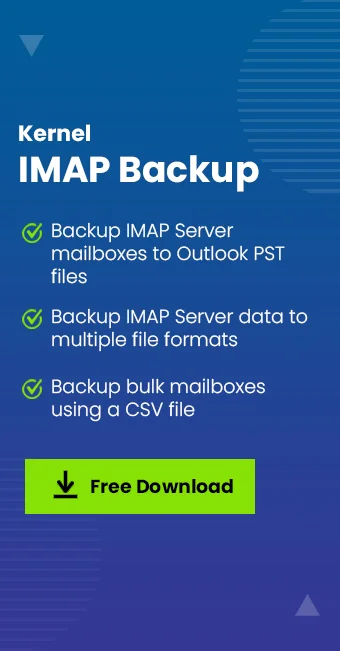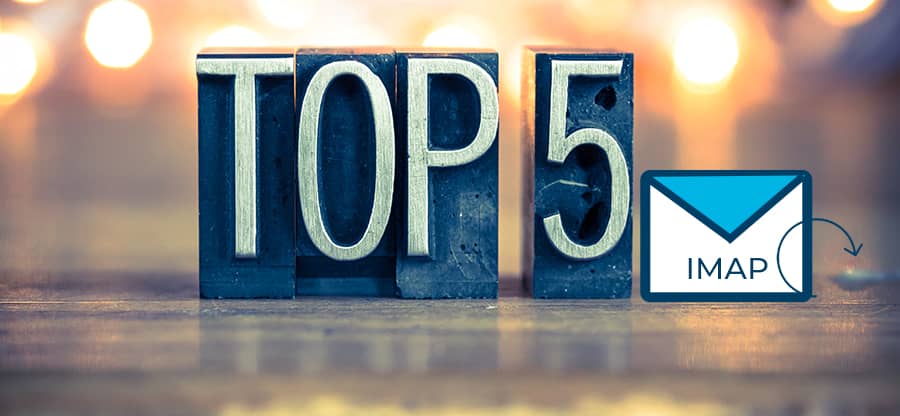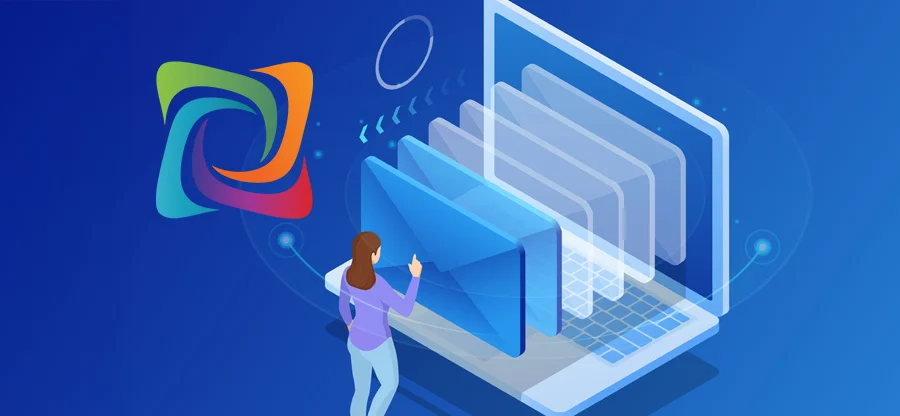Read time 7 minutes
From business documents and client communications records (chats) to personal photos, everything is stored safely on your system. But for how long? What will you do if you know you can lose all that in an instant.
Surely, you know the importance of data. But reasons like hardware failure, device getting stolen, ransomware attacks, human errors, etc., can disappear your data, leaving you with nothing. Furthermore, the rise in cyber-attacks is another significant challenge to deal with.
Using cloud services for data protection is great but think it’s your data sitting on someone else’s computer in a different country. No system is perfect, and relying solely on one is not the best choice. Therefore, having a solid backup strategy is a necessity. Whether you’re running a business or managing your personal files, a backup plan is your only way out when things go wrong.
Breaking Down the 3-2-1 Backup Rule
The 3-2-1 backup rule is a simple method of keeping your data safe, and the best thing about it is that it works really well. It has been more than a decade since individuals started using it, and looking at how effective this backup technique is, everyone from single person to large-scale organizations has begun to rely on it.
The core idea behind the backup rule 3-2-1 is to keep 3 copies of your data, store them on 2 different types of storage media, and make sure 1 of those copies is kept off-site (outside your organization).
It’s easy to understand and easy to implement, no complicated or time-expensive practical approach is required. Even in this modern age or with so many advancements, this rule is still the backbone of backup strategies.
Let’s look closer at what each part of the 3-2-1 rule actually means:
Make 3 Copies of Your Data
If one copy fails, you’ve still got two more. Having multiple copies makes sure you can handle situations like getting back corrupt data and even helps in restoring deleted files from G Suite. The 3 backup copies include:
- Your original data (the one you are using currently)
- A local backup (on an external hard drive or local server)
- A remote/off-site backup (like cloud storage or a remote data center)
Use 2 Different Types of Storage Media
Storing data on two different storage types reduces the risk and eliminates the weaknesses that comes with using a single storage device. If one storage device gets lost or damaged, you will have the second one to restore data. You may use combinations like:
- Local drive + USB stick
- External SSD + cloud storage
Store 1 Copy Off-Site
Having an off-site backup is your safety net in case of theft, fire, flood, or any local disaster. You can use the following options to securely keep your data off-premises:
- Cloud backup (Google Drive, AWS, Dropbox, etc.)
- A remote server or data center
- A portable drive stored in a different location
Keeping at least one backup away from your primary environment is critical. If everything local is lost, you will still have access to your data.
Is the 3-2-1 Backup Rule Still Effective Today?
Yes 100%. Even though data backup technology and practice have changed a lot since the introduction of the 3-2-1 rule, it is still one of the best & effective methods of protecting your data.
These days, many people think storing files in cloud like Google Drive or OneDrive is enough. But what happens if your account gets hacked or your cloud provider faces severe downtime? Depending only on the cloud is risky.
Think of the 3-2-1 rule as an extra layer of protection to keep your crucial data safe. It’s not about just having a backup. It’s about having multiple backups in the right places. Storing your data in different locations and on different media types protects you from nearly every kind of failure, whether accidental deletion, hardware issues, or cyberattacks.
How is Rule 3-2-1 Followed in Modern Backup Practices?
You might be using the 3-2-1 backup rule without even realizing it. Most modern systems still stick to the 3-2-1 model. However, most of them do it automatically behind the scenes. Here are some examples:
- Hybrid Backup Solutions: You might be using software that automatically backs up files to an external hard drive (local) and the cloud (off-site), while keeping the original copy on your computer. That’s exactly what you do in the 3-2-1 rule.
- Cloud-to-Cloud Backup: Several third-party tools backup Office 365, Google Workspace, etc., services by copying the data to another cloud or saving it on the local system. The tools enable users to store copies of data on different media types, cloud or local. You can move the local copy to any off-site location.
- Snapshot and Data Replication: Many cloud providers, like Amazon, Google Cloud, etc., follow the practice of taking snapshots of data and replicating them on different data servers. This approach creates multiple copies of data stored in multiple off-site places. In a sense, they follow the 3-2-1 logic.
Do You Need to Backup Emails?
Backing up your photos, videos, documents, presentations, etc., is crucial. However, equal priority must be given to your emails as well. Emails hold important business deals, confidential client conversations, purchasing receipts, legal documents, personal info, and more.
Some of you may be thinking, why back something that is already on the cloud? Well, as we discussed above, relying solely on your email provider (like Gmail, Yahoo, or Office 365) is risky. Any issue on the server side, like a cyber-attack, server failure, or internal bug, can cost you all of the data. That’s why it is important to have a backup strategy like 3-2-1 to safeguard your emails.
You also need to backup emails to follow and implement data compliance rules to help with any legal auditing or proceeding. Therefore, always have more than one copy of your data, one on the cloud and the other offline (external storage device or local system). Backing up emails can be tiring and time-taking, if you have multiple mailboxes. For fast backup, you must use a third-party email backup tool.
Backup Emails with Kernel IMAP Backup & Restore
Whether you want to backup a single mailbox of an individual or multiple mailboxes from a large organization, Kernel IMAP Backup & Restore is a tool you should know about. This IMAP backup tool is compatible with all IMAP-supported email providers. With advanced algorithms, the tool can easily back up emails from Gmail, Yahoo, Office 365, AOL, Zoho, and more.
The IMAP backup software allows you to save your emails in multiple formats like PST, EML, MSG, HTML, PDF, and others. No matter the mailbox size, you can do unlimited backup operations with the tool. Moreover, the tool also has a restore backup option to place your emails back into the original IMAP server or any other. This gives you the power to store emails in any format and in any location you see fit.
With a simple and easy-to-follow interface, anyone can perform IMAP backup, even if they are not a tech expert. You can backup single/multiple mailboxes with a few steps:
- Launch the software and connect with your IMAP email account details.
- Choose the folders you want to back up, like Inbox, Sent Items, etc.
- Apply filters if needed, like date range, skip deleted folders, etc.
- Select the format you want to save in (PST, EML, PDF, etc.).
- Choose a destination folder on your local system or external drive.
- Start the backup
Does Kernel IMAP Backup & Restore Tool Follow the 3-2-1 Rule?
Yes, it does. The tool is developed in a way that naturally supports the 3-2-1 backup strategy. Here’s how the Kernel’s IMAP backup tool is helping you in the implementation of the 3-2-1 backup strategy:
- 3 Copies: Your email account holds the original copy of the data. Using the tool, you can create an offline copy of your emails. Similarly, you can create 3 or more copies of the data easily.
- 2 Different Media Types: Once you have multiple copies of the data, you can store them however you want. One copy is on your local system, and the other is on an external HDD.
- 1 Off-site Copy: Uploading the backup to a cloud service provider like Google, Amazon, or OneDrive allows to create an off-site backup copy
Wrapping Up
In this blog, we discussed what is the 3-2-1 backup rule and how it fits in with the latest backup methods. Use the 3-2-1 rule combined with modern-day backup tools to protect what’s important to you. Be smart and backup your data before it’s too late.
If you need an enterprise-level email backup tool, check out Kernel IMAP Backup & Restore. The robust tool can back up all your emails and restore them simultaneously with 100% data integrity and original folder hierarchy.









